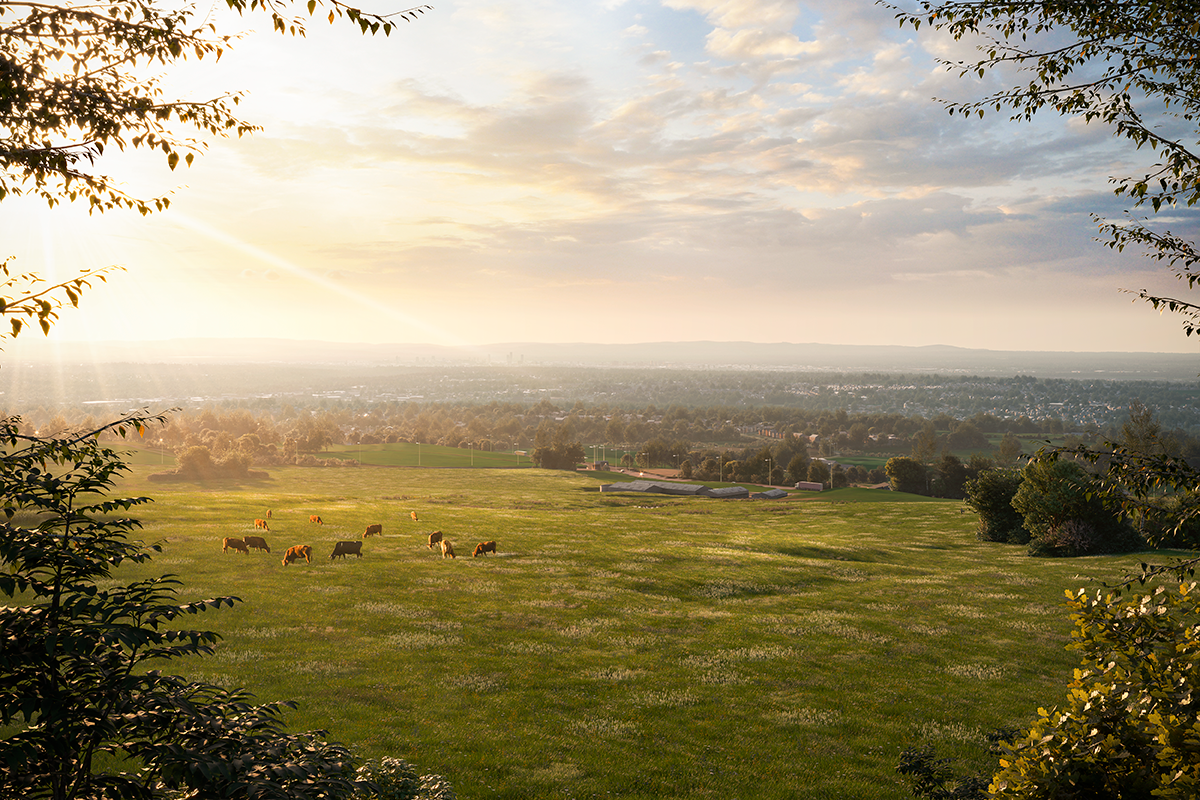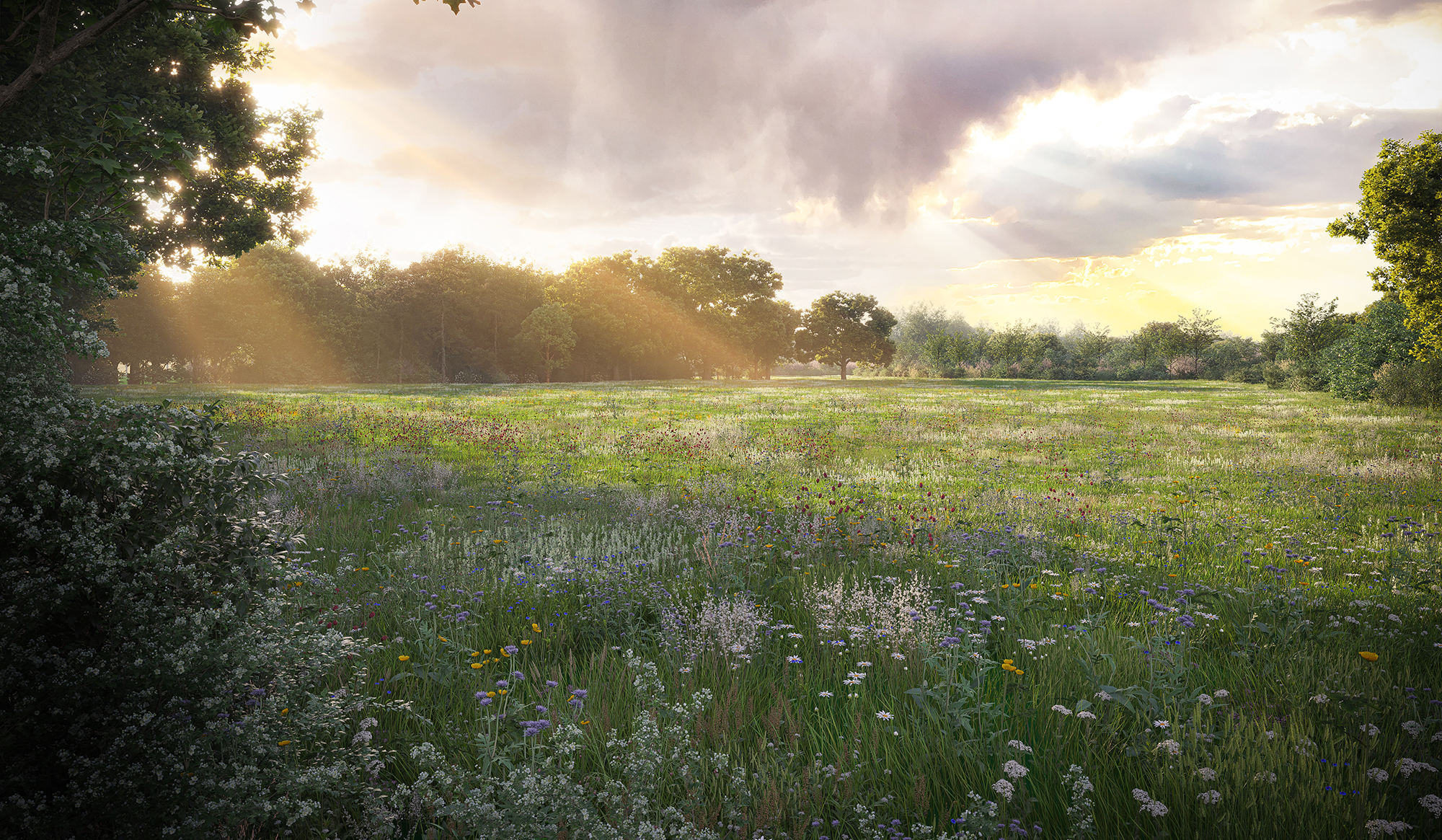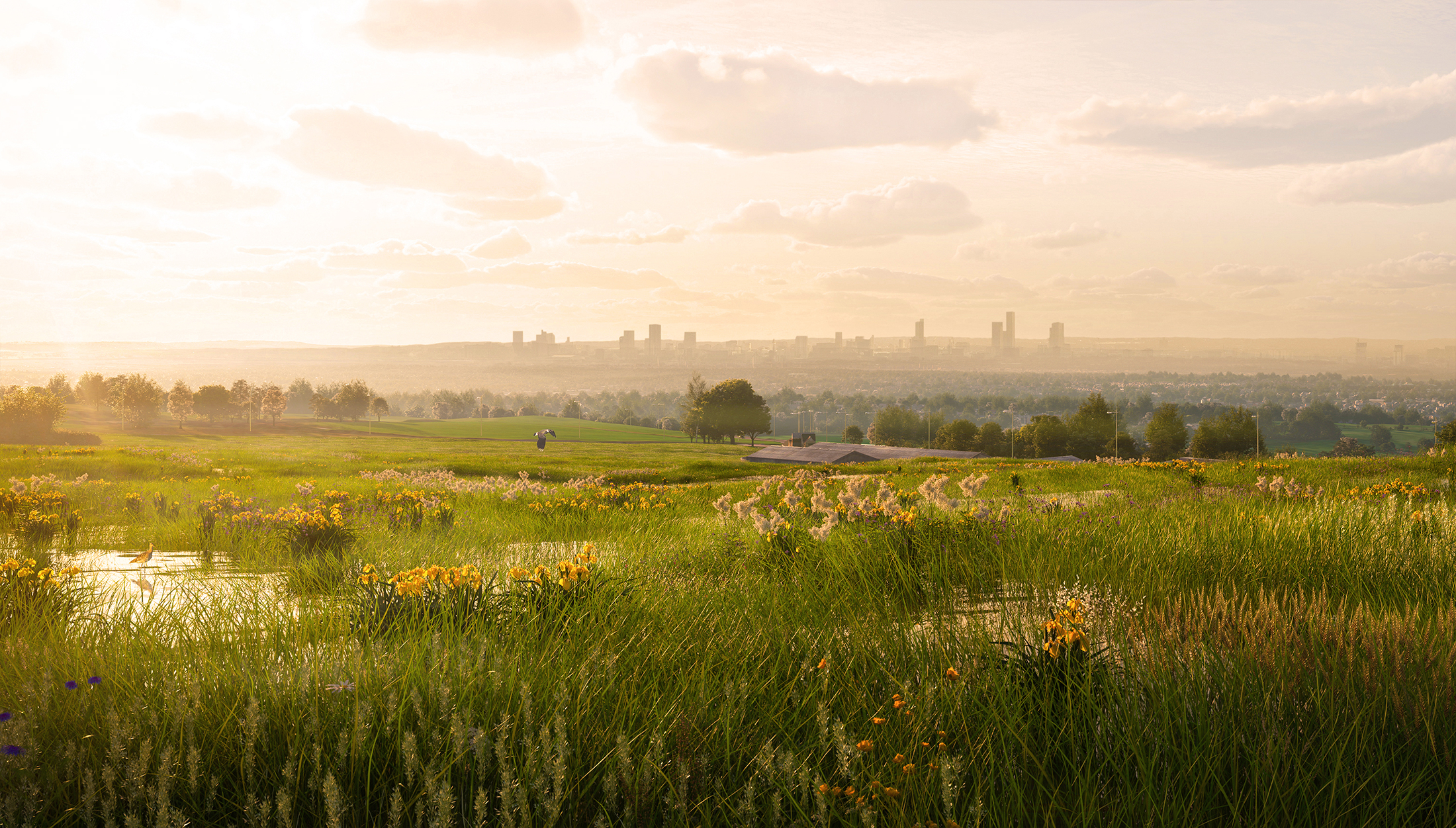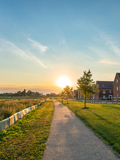Biodiversity Net Gain: Off-site or on-site delivery?
Biodiversity Net Gain (BNG) comes into effect in 2024 and if you are a developer or planner, it’s important that you consider how the abundant benefits of this new and vital legislation can be delivered effectively on your projects.
Environment Bank is establishing a growing network of large-scale nature recovery sites in every LPA area in England. These Habitat Banks are raising the high-integrity Biodiversity Units required by developers to meet their BNG obligations and ensure robust, long-term planning compliance.
Developers and planners may be wondering whether on-site or off-site delivery is a more effective means of unlocking the best possible outcomes for nature, local communities and your development project.
There are multiple options and it’s essential that developers and planners have a comprehensive understanding of each option.
Delivering Biodiversity Net Gain
Off-site delivery involves habitat creation situated outside of the development site’s red line boundary, while on-site delivery is mitigation within the boundary of the development site itself.
While the mitigation hierarchy outlined by the Department for Environment, Food & Rural Affairs (Defra) stipulates that avoiding initial biodiversity loss must be the first priority, development will inevitably lead to some loss to biodiversity. The developer must then mitigate this loss with an additional 10% net gain.
If a developer cannot meet the required 10% biodiversity net gain on the development site itself, there are a range of off-site options that may actually provide greater biodiversity uplifts and community benefits in the long term.
This can include off-site BNG delivery undertaken locally and, because this option ensures the benefits of BNG remain close to the site of biodiversity loss, this delivery method is not penalised by the spatial risk multiplier that increases the cost of mitigation undertaken at distance from the development site.

Off-site delivery
Off-site delivery comes in three different forms:
- BNG within the LPA or NCA (National Character Area)
- BNG within a neighbouring LPA or NCA
- BNG beyond a neighbouring LPA or NCA, therefore at a considerable distance from the development site
BNG delivery within the LPA/NCA is the option that is the least impacted by the spatial risk multiplier within Natural England’s biodiversity metric. It is therefore the first option that planners and developers must pursue. It allows the developer to avoid the increased cost associated with non-local delivery and it ensures the associated benefits of BNG are attained within the local area.
Off-site delivery within an LPA/NCA, with large-scale nature recovery sites, has broad social and environmental benefits, including economic growth and job creation through the habitat creation. It also enhances community access to nature, and the opportunity to align habitat creation with local nature recovery strategies (LNRSs) helping the local authority to meet their broader environmental goals.
If the LPA has declared a climate emergency or has an active LNRS in place, a comprehensive BNG delivery plan can be adapted to support this. If such goals have been established, off-site BNG provision will provide ample space for ecosystems to grow in abundance – ensuring gains for nature are plentiful.

Off-site benefits for nature
It's got to be remembered that BNG was set up for nature, and when delivered off-site, these are abundant. Restoring ecological networks, creating essential wildlife corridors, and improving ecosystem services. This includes cleaner water, increased carbon sequestration, improved species abundance, and enhanced soil health for natural flood management.
Unlike on-site provision, off-site nature restoration does not result in isolated pockets of biodiversity. By using landscape-scale sites and connecting areas of ecological significance, such as ancient woodlands and sites of special scientific interest (SSSIs), off-site delivery can employ the core principles for creating effective ecological networks – making them bigger, better, and more joined up.
This is why Environment Bank’s off-site Habitat Banks are created on land leased from a local landowner, designed in collaboration with the local authority, monitored by expert ecologists, and managed collaboratively – using a tailored Habitat Management Plan to guarantee effective BNG delivery. While decreasing government subsidies remain a challenge for agricultural communities, these partnerships are diversifying income streams for many farmers and providing much-needed financial security.

On-site delivery
There are a range of considerations that should be made when delivering BNG on-site – including planning proposals, project viability, pressure on developable land, and guaranteeing delivery for biodiversity uplift for the mandated 30-year period.
It is possible to deliver BNG on-site; this could include the planting of wildflower meadows or the installation of green roofs or walls. However – as BNG ecosystems have to be carefully protected, maintained, and monitored for the full 30-year term so they remain compliant with planning obligations – providing adequate delivery on-site can be far more challenging, especially in housing developments where you have pets, children playing and different views on what nature looks like.
Ongoing communal use at domestic developments often prevents the long-term maintenance needed for biodiverse habitats to meet the standards required by Defra, which might lead to habitat failure and a further loss of biodiversity.
Large logistics schemes, commercial warehousing, retail buildings, ports facilities, and infrastructure development usually have very limited scope to provide biodiversity uplift given that most involve large slabs of concrete and tarmac. With sites like these, access for monitoring uplift is impractical for many reasons such as security or safety. Such places do not attract people looking for nature, so off-site provision is critical in those instances.
Additionally, s.106 agreements or conservation covenants will need to apply to any spaces being used for BNG delivery – including any buildings with green roofs installed for BNG. Therefore, public areas or infrastructure legally bound to BNG cannot be altered for the full 30-year term, restricting use of the space and impacting future development options.
As well as expensive habitat management and monitoring costs, delivering BNG on-site also often means that green spaces are not free to use for recreation and amenities designed with people in mind, such as decorative flowerbeds, allotments, and playing fields – things that do not contribute towards BNG.

Hybrid options
Developers can explore solutions that merge off-site and on-site provision. This can be an effective option wherever an area of on-site habitat has been preserved, such as woodland, but another area of on-site habitat, such as grassland, has been disturbed and needs to be compensated for elsewhere.
Therefore, a developer looking for planning permission should always engage with an expert ecologist to understand the best ways to monitor and maintain the on-site BNG delivery and current habitat preservation.
However, it is essential that the 10% uplift is met and any biodiversity loss is fully mitigated either on-site or off-site. This is why purchasing Biodiversity Units is advisable whenever habitat loss cannot be mitigated on-site.
With £240M in sustainable funding already secured and over 6,500 acres of habitat creation underway nationwide, Environment Bank can create a tailored delivery plan with any developer to provide a frictionless solution for BNG delivery with their high-integrity Biodiversity Units raised on their Habitat Banks. Plus, all liability sits entirely with Environment Bank for off-site delivery, offering a clean break solution for developers that ensures clarity, certainty, and security from day one.
Whatever solution you choose, the key to any successful local BNG strategy is to consider this a unique opportunity for nature recovery – providing the means to restore biodiversity lost from development – not only for our environment but for local communities too.
Find out the cost and availability of Biodiversity Units for your development

